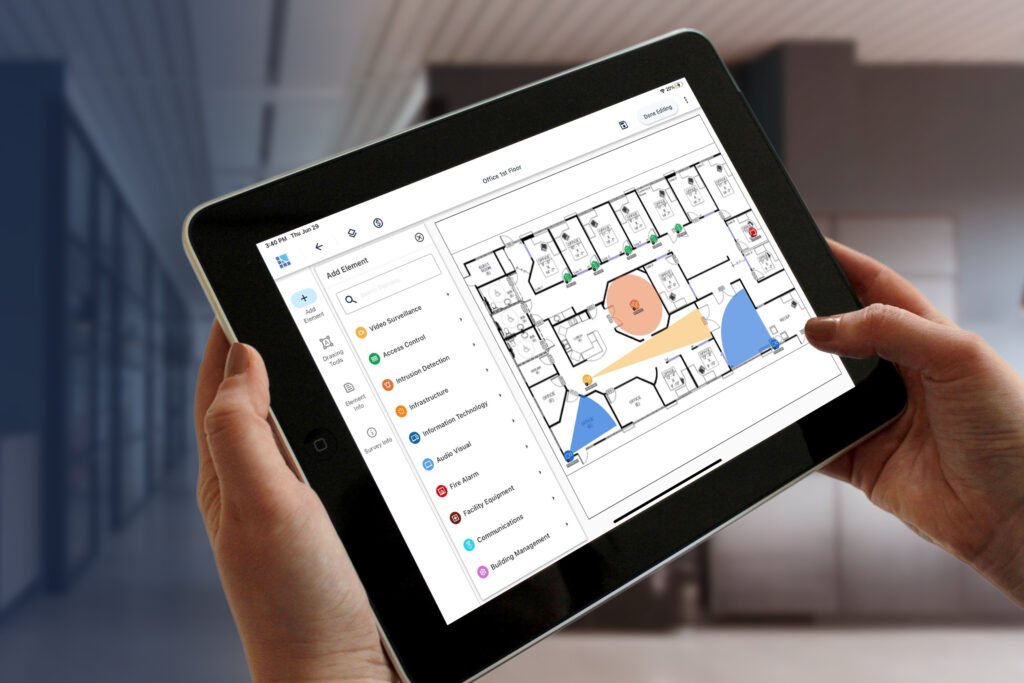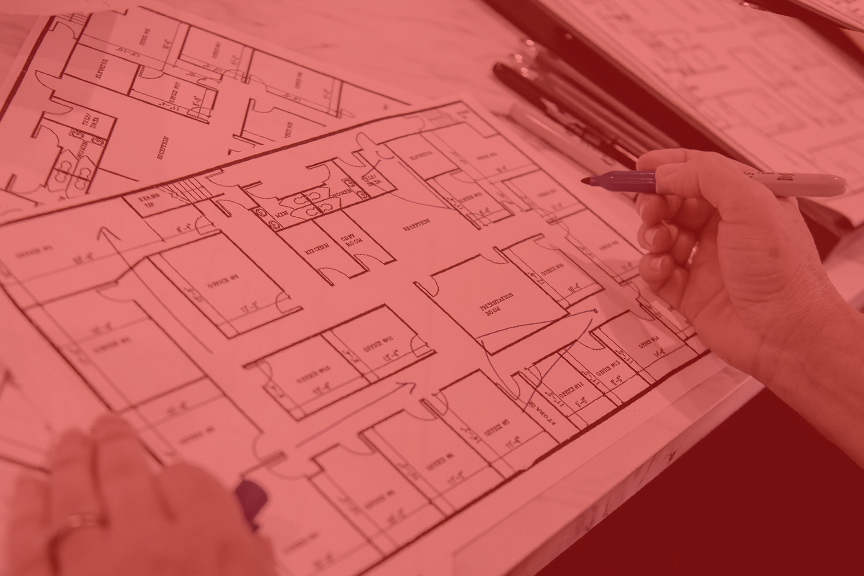The Real Problem: Flawed Site Surveys
In the system integration world, site surveys are often treated as a formality. They shouldn’t be. Too many teams still rely on the same old manual methods—yellow pads, cell phone pics, scattered notes, or worse…memory.
The result? Inaccurate system designs, flawed estimates, and blown project margins.
And yet, we keep doing it.
It’s time to break the cycle.
Bad Surveys Create a Domino Effect
When site surveys are rushed or incomplete, the downstream effects are painful:
- Proposals are inaccurate
- Costs are under- or over-estimated
- Projects start with the wrong expectations
- Margins shrink or disappear
- Customer confidence drops
Whether you’re planning dozens of surveillance cameras or upgrading access control for hundreds of doors, it all starts with the quality of your site survey.
Even if your company doesn’t have a formal estimator, the problem remains. A solid system design starts with the right information—photos, video surveillance and camera coverage areas, device placements, installation notes, and more. Miss those, and you’re guessing. And guessing costs money.
In today’s tight-margin environment, you can’t afford to lose even 2–3% of project margin. It adds up fast.
3 Things You Can Do Right Now to Fix It
Let’s be honest: If you’re a sales or ops leader, bad estimates sting. But the good news? You can fix this—starting with how you approach site walks.
Here are three practical ways to clean up your site survey process:
1. Capture Everything in One Place
Ditch the notepads and random tools. Capture all site data in one unified platform.
Look for a tool that’s:
- Mobile-friendly and easy to use on-site
- Designed for drag-and-drop system design
- Presentable to customers (no CAD skills required)
- Made specifically for physical security and AV system integrators
Trying to use generic project management tools or just “keeping it in your head” won’t cut it anymore. Standardize your data capture at the first point of the customer journey—and stop the leaks before they start.
2. Collaborate Visually with Experts
Once you’ve done the survey, don’t work in a silo. Use visual design tools to collaborate with:
- Manufacturer partners
- Sales engineers
- Estimators
- Your customer
For example, AI cameras require specific placement for analytics to work. Get that wrong, and the tech won’t deliver. Use visual collaboration to co-design and validate placement before the install.
Bonus: When you involve your customer in the design, you build long-term trust—and avoid surprises later.

3. Standardize Across Your Team
Consistency = better outcomes and higher business value.
When your entire team follows the same process, you:
- Improve accuracy
- Reduce onboarding time
- Increase project win rates
- Improve your company valuation
Invest in onboarding and certification programs from your software provider. Encourage your team to:
- Get certified
- Attend webinars
- Connect with customer success reps for best practices
Small habits, lead to a big payoff.
Get to the Root Cause: Fix the Site Survey
Chris Hugman, our founder, saw this firsthand while running a system integration company. After digging into the root causes of lost margin and inefficiency, one issue kept popping up: messy, manual site surveys.
That realization led to the creation of System Surveyor—and since then, we’ve helped thousands of integrators streamline the process, cut costs, and grow.
We’d love to help you do the same.
Top 3 Questions We Get Asked About Conducting Better Site Surveys:
1. What are the most important requirements and information to capture during a security site survey?
Capture the locations where devices are going to be needed. Take photos of the location for installation and in some cases the device coverage area. If the floor plan is not fully up to date, you can capture possible walls or other boundaries that can present a problem.
Find out if there will be additional cabling needs and where cabling will need to be pulled – even if it is the initial information for your estimator team.
Also, gather information about how video surveillance or other devices are being recorded. Is it to the device or to the cloud?
Take note if any cameras need to be painted to blend in for the building design, identify if there are any environmental factors for installation, or will they need specialized enclosures for weather or other security purposes.
Capture notes and information about the access to the site location later for installation and whether a lift or other requirements will be needed such as mounts and accessories. This is important for an accurate estimate.
2. For video surveillance and camera placement, what are the most common considerations?
Depending on the camera type for analytics, license plate recognition, or general video surveillance coverage, the designer will need to know the mount height, distance, pixels per foot etc. Software design tools such as System Surveyor help to calculate and advise on the proper cameras to meet the application.
3. Who should conduct a security site survey and system design?
Oftentimes, a security site survey can be completed by a trained system integrator sales representative or a sales engineer. Ideally, the information is easy to capture using a digital tool into one place that can be accessed by estimators or the team at the office for the next phase of the design. A variety of people may be involved in the next step of the design including engineers, operations, customer stakeholders and manufacturer vendors. Capturing more information will help them to create a more accurate design.
👉 Try System Surveyor for Free.
Want more? Check out our most-read blog: 8 Steps to Conducting a Successful Site Survey.
